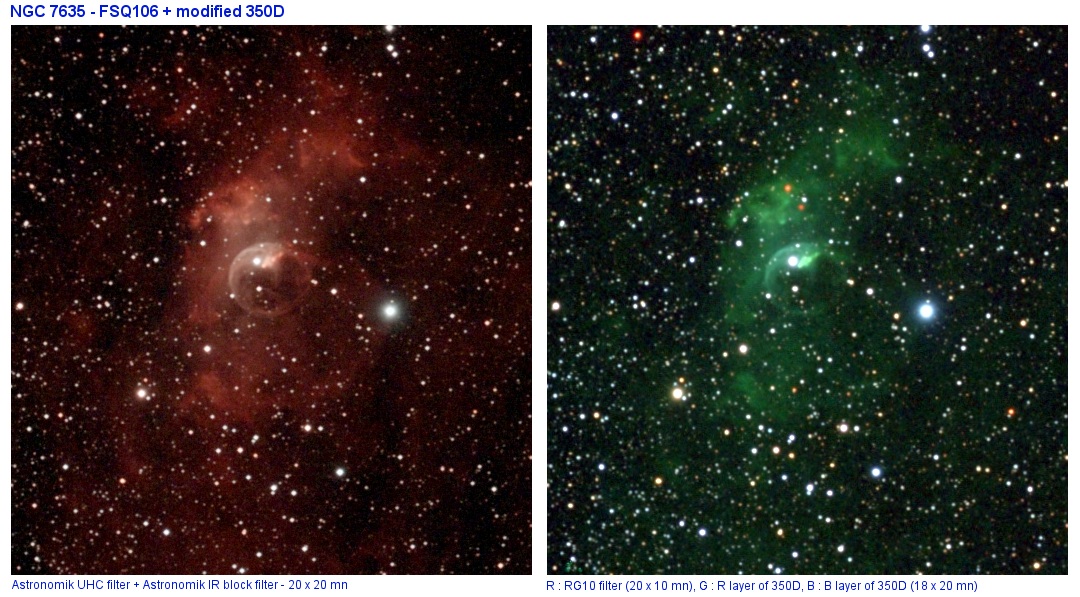
NGC
7635 field
September 19, 2005 session
Instrument: Takahashi FSQ106 refractor (4-inch aperture).
Camera: Modified Canon EOS 350D (internal
IR rejection filter removed). Stack of 18 x 600 s at ISO200. Filter: Astronomik
IR cut (2-inch diam.) reject the excess of IR light (no Halpha
filter used for this session). The conditions are
very severe: bright suburban sky and four days after full moon (the
limiting mag visually naked eye from my observatory is near 3). Software:
Iris is used for remote control the
DSRL (via
QuickRemote USB
interface), autoguiding and processing.
The original files are of RAW type (.CR2). The adopted white balance coefficient are R:1.38, G: 1.00, B: 1.23. The processing is minimal: dark frame subtraction, flat-field and gradient removal were applied (gradient mask is computed on the red layer - see method here). Final touch: a simple logarithm look up table modification under Iris is used for nebula images.

Click here for download an uncompressed version of this poster (2.2 Mo)
Crops of the final image (original scale)

Click here for download an uncompressed version of this poster (2.4 Mo)
September 30, 2005 session
Instrument: Takahashi FSQ106 refractor (4-inch aperture). Camera: Modified Canon EOS 350. Filters: Astronomik UHC filter associated to an Astronomik IR-cut filter (click here for the plot of the resulting transmission). Exposure: Stack of 20 x 20 minutes. Location: Castanet Observatory (no moon light, but always suburban). Software: Iris (remote control of the Digital SLR, autiguiding and processing). The adopted white balance coefficient are R:1.20, G: 1.00, B: 1.10. Simple logarithm stretching for harmonize the nebulae aspect. Click on the image for enlarge.

Below, details of the image September 30, and comparison with a 350D infrared image taken the September 26, 2005 (filter: RG10 filter, exposure: 20 x 10 minutes). Note the presence of IR sources in projection with the nebulae (or associated ?) i.e. the very red stars. The Halpha emission is green colored in the composite infrared image :

Same for the SH2-159 region :

Same for the NGC7538 region:

Tentative for increase spatial resolution with the drizzle algorithm. A significant gain is visible (but the detectivity is lower) :
